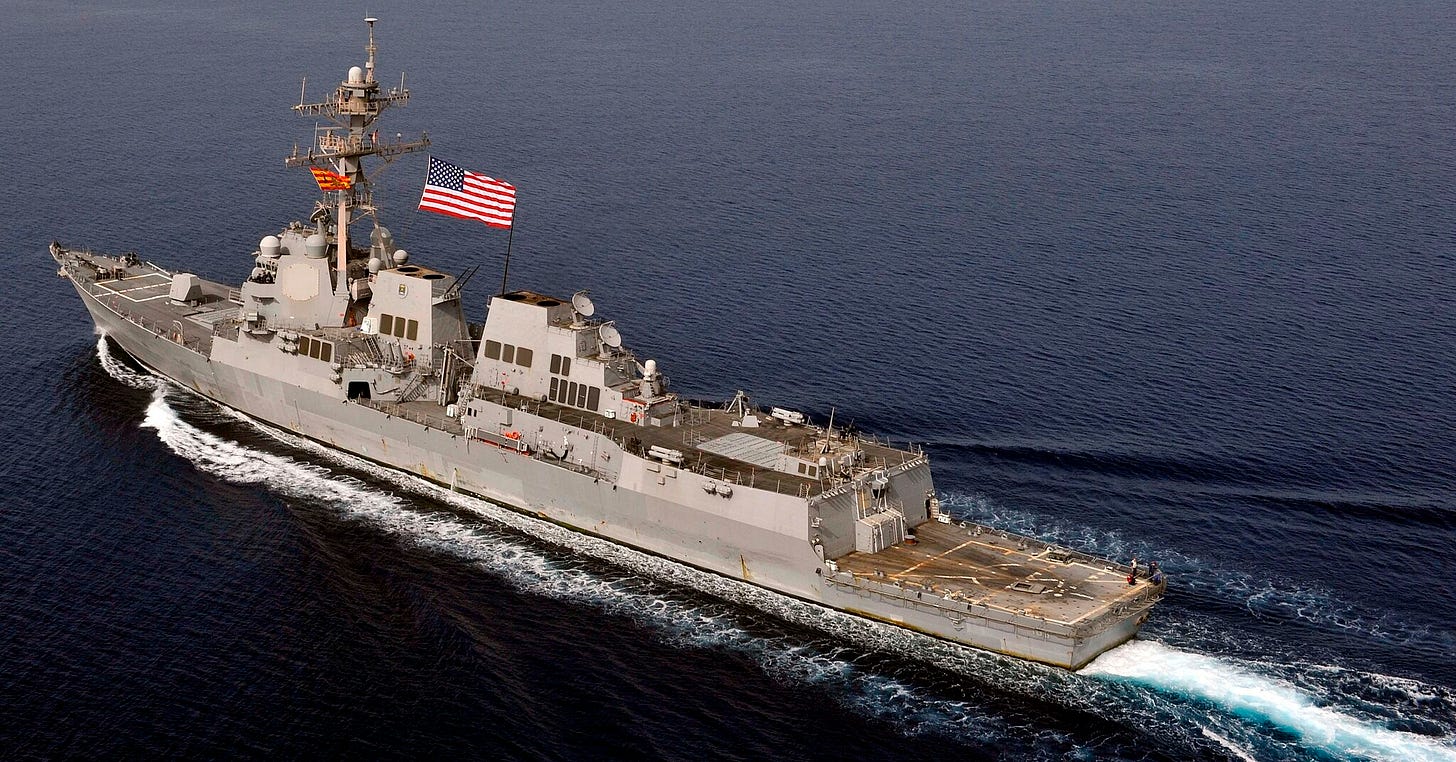Military Brinkmanship Tests Caribbean Stability
US-Venezuela tensions escalate to dangerous aerial provocations after deadly vessel strike
The Caribbean has become a powder keg as Venezuelan military aircraft conducted “highly provocative” maneuvers near the USS Jason Dunham, days after US forces destroyed an alleged drug vessel, killing eleven. Washington has deployed eight warships including three destroyers and 4,500 military personnel to the region in what officials frame as enhanced counter-narcotics operations.
Image: The guided missile destroyer USS Jason Dunham
President Trump authorized potential shoot-downs of hostile aircraft, while Venezuela’s Nicolás Maduro mobilized 4.5 million militiamen, denouncing “the greatest threat our continent has seen in the last 100 years.” Maduro warned he was ready to “declare a republic in arms” if US forces attack Venezuela.
The crisis transcends narcotics enforcement. The US recently doubled the bounty on Maduro to $50 million, while deploying what Venezuelan UN Ambassador Samuel Moncada called a “massive propaganda operation to justify kinetic action.” Regional analysts warn this represents a classic case of coercive diplomacy where “the line between signaling and all-out war is perilously thin.”
For Caribbean states caught between Washington’s pressure and Caracas’s defiance, the escalation forces impossible choices. The crisis evokes the Cuban Missile Crisis’s dangerous precedent of great power competition in America’s maritime backyard.
Our Take: The Caribbean standoff shows how quickly law enforcement operations can mutate into military crises. Venezuela’s aerial provocations and Trump’s shoot-down authorization create a dangerous escalation spiral where neither side can back down without losing face.

